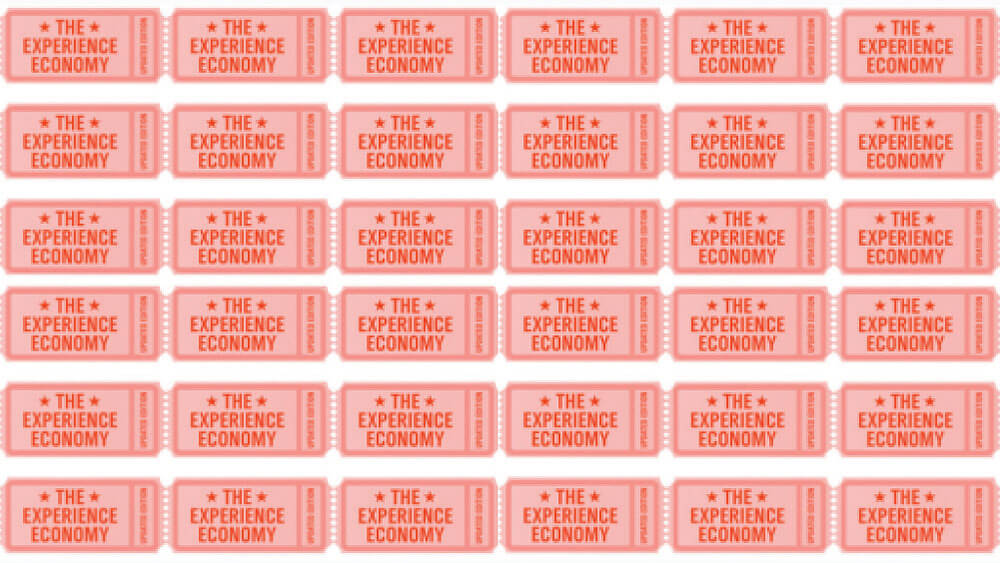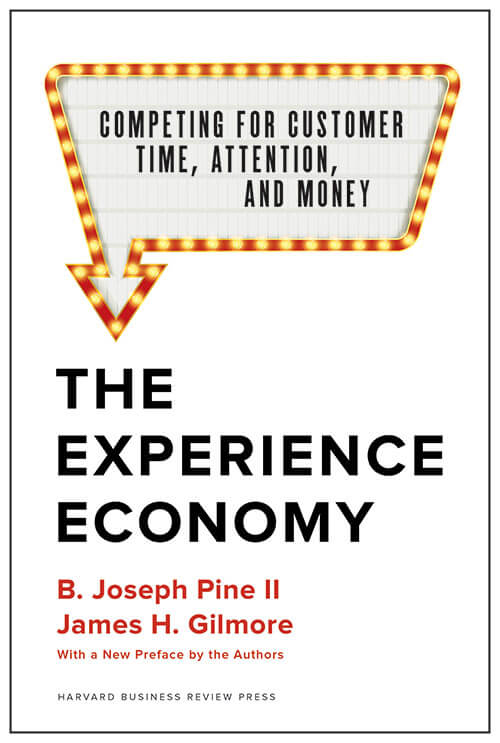
The experience economy they wrote about in 1999 has fully arrived, say The Experience Economy: Competing for Customer Time, Attention, and Money coauthors James H. Gilmore and B. Joseph Pine II.
When the 20th anniversary edition of The Experience Economy: Competing for Customer Time, Attention, and Money was recently published with a new preface, it seemed like a good time to reflect on how the movement to experience — rather than consume/purchase — things has changed people’s expectations when it comes to attending events. So Convene reached out to the coauthors, James H. Gilmore and B. Joseph Pine II, for an expert perspective. Here’s what they had to say:
The Experience Economy. It’s not next or emerging; it’s fully arrived. We’re in an Experience Economy. Right now. We anticipated this in our book, The Experience Economy, first published by Harvard Business School Press in 1999.
Remember 1999? The looming Y2K “crisis”? AskJeeves? Maybe you owned a Nokia 3310, the top-selling cell phone at the time — loaded with four games, 35 ringtone options, and space to download seven more. Maybe you visited a Starbucks for the very first time.

James H. Gilmore
Much has changed over the last 20 years, of course, yet one constant has persisted throughout: a shift away from merely producing and purchasing goods and services, to a focus on creating and consuming experiential value. Witness the many new-to-the-world experiences that now exist, such as Apple Stores, Airbnb, TopGolf, and Tough Mudder, to name a few examples. Today thousands of escape rooms, rage rooms, salt rooms, scream rooms, and countless other genres of experience fill the landscape. This shift was no mere fad or trend, but a fundamental change in the very fabric of advanced economies: We now consume time most of all.
Time is the currency of experiences. People value two forms of time: time well saved and time well spent. As less time (and money!) is spent on goods and services, less time in stores and with call centers, people simultaneously spend more time (and money!) on experiences that engage them in a personal and memorable way. Since 2016, U.S. consumers spend more money per year — and much more time — at restaurants and bars than in grocery stores, i.e., more on food service and dining experiences than on commodity produce, meats, and packaged goods.
This ongoing shift evidences itself not only with consumers, but occurs in the business-to-business realm as well. Both B2C and B2B offerings now face the same No. 1 competitor, the smart-phone. Fail to engage someone and that person is “gone,” elsewhere, with the simple tap or swipe of a screen.
Business meetings, conferences, and events — the very foundation of B2B commerce — are no exception. Receptions, general and concurrent sessions, award ceremonies, trade shows, and meals encounter difficulty maintaining attendance, let alone gaining full participation. Many execs and managers, if they attend at all, pick and choose when to flow in and out of the components of any event. Some events not only suffer from fewer overall numbers, but also fewer total hours of engagement.

The Experience Economy: Competing for Customer Time, Attention, and Money was first published in 1999. Much has changed since then.
Beyond the competition for the 24 hours we all have available per day, three particular events have profoundly changed the dynamics of conferences and other business events. These three have become institutions, main centers for the formulation of experiential expectations of human gatherings.
First, TED. Its 15- to 18-minute format for talks (“short enough to hold people’s attention” and “long enough to say something that matters,” per TED curator Chris Anderson) puts huge pressure for less time overall and per event element. Furthermore, its decision to make TED-talk videos available for free, combined with licensing TEDx rights for local events, means less reason to travel to access thought content. TED has created demand for more efficient time whenever people convene.
Second, SXSW. A mashup of leading-edge educational content with bleed- ing-edge culture in music, film, and other media arts, SXSW offers a unique mix of interactions among like-minded individuals. SXSW manages to capture more time, running 10 straight days, by offering voluminous options around the clock, essentially offering more flexible time. SXSW has promulgated the notion that one does not go to an event as part of a day; rather the entirety of each day must provide opportunities to discover something new.
Finally, Burning Man. Don’t let the oddity of this annual pop-up city lead you to think the nine-day happening doesn’t influence expectations of events staged by more staid organizations. Burning Man is California’s mancave. Its ethos flows from Silicon Valley through San Francisco to the Black Desert of Nevada. As the global center for technological innovation, no other place drives change in the world like Silicon Valley. The digerati and postmodern artists who participate in Burning Man, its community of “Burners,” set the tone and direction for the digital experiences of our everyday lives. Furthermore, the Burning Man experience extends well beyond what occurs during the festival itself. Consider it effluent time, valued for the energy generated and the inspiration which flows thereafter and long after. This kind of transformation is what everyone increasingly desires from every happening, however traditional.
As business writers and experience strategists, we’re often asked to speak or teach at conferences. We see among event organizers a constant desire for newness — something from the latest hot speaker with the hottest idea in a newly minted book. We sometimes feel penalized for having discovered and articulated something enduring — not an idea that might happen, but the prescient anticipation of what has happened and continues to demand practical, new thinking. For every TED, SXSW, and Burning Man, we’ve observed scores of other experiential ventures, both failures and successes. We’ve taken note of what works and what doesn’t. We’re convinced now more than ever of the need for sound experience thinking.
In the new preface to The Experience Economy, we provide five lenses through which to revisit the original frameworks and tools shared in the book: addressing the need for robust, cohesive, personal, dramatic, and transformative experiences. As organizers continue to compete for their audience’s time, attention, and money, they should aim for these five adjectives to describe their events.
Joe Pine and Jim Gilmore founded Strategic Horizons LLP in 1996.
